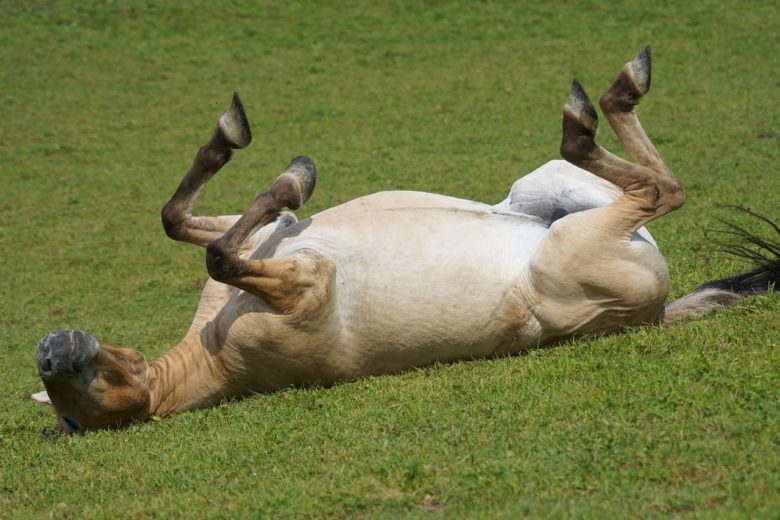
Chernobyl Animals Show Hope in the Face of Devastation
We are reader-supported. When you buy through links on our site, we may earn affiliate commission.
Back in the 1800s, the Pripyat River basin was teeming with wildlife — what would be the Chernobyl animals — a natural wetland and forest habitat stretching between the border of Ukraine and Belarus.
A century later, most of that natural habitat disappeared. The Industrial Revolution brought along deforestation, a problem devastating animal habitats across the globe. Large swaths of trees are cut down at a time, instantly destroying the homes of hundreds of species. Pripyat was no different. Trees were cut down and replaced with pasture. Lumber was sold and industry began to develop.
In total, humans have nearly halved the number of trees on the planet. But efforts were made to restore the Pripyat region, bringing back new life. And in 1977, construction of a power plant called Chernobyl began. Six years later, four nuclear reactors were complete and plans for an additional two reactors were in the works. The year was 1986 and things were looking up for the region of Pripyat.
Then on April 26 at 1:23 in the morning, everything changed.
The Chernobyl Disaster
An uncontrolled reaction caused pressure to build. The roof of Reactor 4 blew to pieces, releasing plumes of radiation and chunks of fiery radioactive debris. A second explosion hurled out more toxic flames and spread to Reactor 3. The automatic safety systems, which had been shut down prior for a routine check, did not kick into action.
Many people died, suffering from acute radiation sickness, burns and cancer. Pripyat’s 50,000 residents were told to evacuate. Vast quantities of radiation were released into the air — 400 times more than the bombing of Hiroshima — including substances like plutonium, cesium-137 and iodine-131. Idione, while initially viewed as less harmless, traveled the furthest from the reactor and caused the most severe health problems.
This evacuated area, encompassing 770 miles, became known as the Chernobyl Exclusion Zone, the defunct power plant now encased in a concrete shell. Many claimed life in the Exclusion Zone was impossible, that animals would become mutated and sick. But new research suggests the opposite may be true — animals may be thriving in the human-free sanctuary.
Signs of Renewed Life
Scientists are divided on the state of animals in the Exclusion Zone. Camera traps have proved the area is teaming with wildlife — moose, wolves, wild boar, bison, lynx, otters, eagles and more. With one-third of land-based vertebrates experiencing reduced populations, how is an environment with toxic levels of radiation thriving?
Experts say the absence of humans in the area provides a lot of benefits, outweighing the risk from radiation. Could it be humans pose more threat to animal populations than potentially-deadly chemicals? We love nature — we’re all looking for ways to connect. But our interference can have adverse effects on animals and their habitats.
With the human-free Exclusion Zone, the wildlife population seems to do better than ever.
A Thriving Population
Those who hurriedly fled the meltdown left behind pets. Today, these stray dogs chiefly rely on the kindness of strangers for food, leftovers from workers in the Exclusion Zone. Radioactive particles could exist on the dogs’ fur and people are advised not to touch or pet.
Hundreds of stray dogs roam the area. A fund called Clean Futures routinely returns to the site of Chernobyl to spay, neuter and vaccinate strays as well as find eligible candidates for decontamination and adoption. They estimate more than 250 dogs live around the power plant and hundreds more roam throughout the Exclusion Zone.
Another common site in the radioactive area is Przewalski’s horses, also called Mongolian wild horses. Once nearly extinct, the species was introduced to Chernobyl in 1998, along with other reserves across the globe. With no humans in the Exclusion Zone, the population of horses has boomed.
Wolves also seem to prefer the intrusion-free habitat, with higher population densities found in Pripyat than in Yellowstone Park. Experts believe wolves may get protection from the deadly radiation by traveling for long stints of time outside the Exclusion Zone.
The Future of Chernobyl’s Animals
There’s no denying there are plenty of wild animals around Chernobyl. But are those animals healthy? That’s where experts disagree.
One point of view is that while these sites are contaminated, the radiation levels can’t be too harmful. Animal populations can grow and sustain themselves. The benefits from the removal of humans outweigh any risk from radiation.
The other point of view argues the animals who live in contaminated sites could begin to see dramatic consequences. After weeks, months and years, what will the effects of radiation look like? And with many of these animals traveling outside of the Exclusion Zone, what is the risk of mutations and defects spreading?
There is no definite answer at the moment. But as time passes, we will undoubtedly learn more about the animals thriving in the human-free area around Chernobyl.
Share on
Like what you read? Join other Environment.co readers!
Get the latest updates on our planet by subscribing to the Environment.co newsletter!
About the author

Jane Marsh
Starting from an early age, Jane Marsh loved all animals and became a budding environmentalist. Now, Jane works as the Editor-in-Chief of Environment.co where she covers topics related to climate policy, renewable energy, the food industry, and more.





